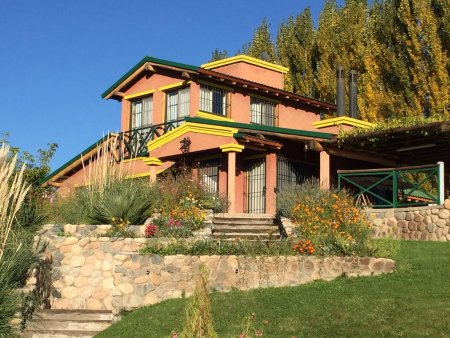Cabernet Sauvignon Argentina is entering a dynamic new phase, gaining attention on the global stage similar to Malbec’s rise years ago. No longer defined by dense, oak-heavy profiles, today’s high- altitude Cabernet Sauvignon—especially from Uco Valley wine regions, Luján de Cuyo, and Salta—showcases elegance, structure, and vibrant aromatics. The synergy of Andean terroir, intense sunlight, and cool nights delivers high-altitude vineyards with finely textured tannins, fresh acidity, and distinct layers of cassis, mountain herbs, graphite, and spice. Thanks to old vine Cabernet and selective clonal choices, quality is reaching new heights as Argentine winemakers reduce oak, allowing terroir and texture to take the lead. Cabernet Sauvignon is now a standout signature for Argentina wine industry experts and enthusiasts alike.
High-Altitude Vineyards & Andean Terroir
Argentina is renowned for pushing the limits with high-altitude vineyards, and the Andes Mountains are at the core of this viticultural revolution. Elevations in Salta’s Calchaquí Valley soar to 3,000 metres, while the celebrated Uco Valley wine zone thrives between 1,000 and 1,600 metres. These extreme elevations, rocky soils, and wide day-night temperature shifts deliver grapes with thick skins, vibrant aromas, and natural acidity. The dry mountain climate minimizes disease and enables sustainable wine production, including organic and biodynamic practices.
Old vine Cabernet is a treasure of regions like Uco Valley, Maipú, and Luján de Cuyo, where many ungrafted vineyards over 50 years old produce concentrated flavors and precise terroir reflection without over-manipulation. Cutting-edge techniques—concrete eggs, amphora, minimal oak, and gentle extraction—are helping Argentine winemakers create wines that are expressive, site-driven, and infused with the essence of Andean terroir.
Leading in Sustainable Wine Production
The Argentina wine industry has embraced sustainable wine production, regenerative agriculture, and water stewardship at an impressive pace. The dry conditions in Mendoza, combined with advances such as drip irrigation, native cover cropping, energy-efficient wineries, and biodiversity initiatives, are placing Argentine winemakers at the forefront of eco-conscious practices. Many top cellars are on the path to carbon neutrality and zero-waste models, solidifying Argentina’s leadership in sustainability.
Global Inspiration, Local Innovation
International partnerships between Argentine winemakers and peers in Burgundy, Tuscany, Valpolicella, and California are fueling creativity and cross-pollination in wine style and philosophy. Rather than merely following trends, Argentina reinterprets global winemaking through its unique climate, soils, and culture, maintaining its authentic voice amid innovation.
Looking Ahead: Argentina Wine Industry
No longer just “the land of Malbec,” Argentina wine industry leaders are defining the next chapter in terroir-focused, sustainable wine production with expressive Cabernet Sauvignon Argentina, fresh whites, and site-specific reds. With its high-altitude vineyards, old vine Cabernet heritage, and reputation for Andean terroir, Argentina stands at the forefront of New World wine excellence.Here is a revised, SEO-optimized version of the blog incorporating requested keywords: “Cabernet Sauvignon Argentina,” “high-altitude vineyards,” “old vine Cabernet,” “Uco Valley wine,” “Andean terroir,” “Argentine winemakers,” “sustainable wine production,” and “Argentina wine industry.”
Cabernet Sauvignon Argentina: A New Chapter Begins
Cabernet Sauvignon Argentina is stepping confidently onto the world stage, echoing the dramatic debut of Malbec decades ago. Today’s high-altitude vineyards—especially in the Uco Valley, Luján de Cuyo, and Salta—are crafting Cabernet Sauvignon with a focus on elegance, structure, and fresh aromatics. These wines, shaped by the unique Andean terroir and dynamic climate, offer fine tannins, vibrant acidity, and complex flavors of cassis, mountain herbs, graphite, and spice. Thanks to old vine Cabernet and selective clonal plantings, quality continues to rise as Argentine winemakers shift away from heavy oak, letting terroir-driven character shine.
High-Altitude Vineyards & Andean Terroir
The Argentina wine industry has become a leader in high-altitude vineyards, leveraging the Andes Mountains to explore a vast range of elevations and soil types. Vineyards in Salta’s Calchaquí Valley reach over 3,000 metres, while the renowned Uco Valley wine region features sites between 1,000 and 1,600 metres in elevation. At these heights, intense sunlight, dry climate, and dramatic day-night temperature differences produce grapes with thick skins, lively aromatics, and refreshing acidity. The Andean terroir favors sustainable wine production, minimizing disease and supporting organic and biodynamic viticulture.
Old vine Cabernet, some rooted deep for up to 100 years, thrives in regions like Uco Valley, Maipú, and Luján de Cuyo. These ancient vines deliver concentrated flavors, natural balance, and true expression of place, benefiting from minimal intervention. Argentine winemakers are embracing modern methods—concrete eggs, amphora, gentle extraction, and reduced oak—to preserve precision and clarity, producing truly site-driven wines.
Sustainability & Global Perspective
The Argentina wine industry is at the forefront of sustainable wine production, from regenerative agriculture and organic certification to smart water management. Mendoza’s dry conditions are ideal for innovative techniques like drip irrigation, native cover cropping, and energy-efficient cellars. Many top Argentine winemakers are embracing carbon neutrality and zero-waste goals—setting a benchmark for wine sustainability on the global stage.
With international collaborations spanning Burgundy, Tuscany, Valpolicella, and California, Argentine winemakers are fusing global insight with local identity. Rather than copying trends, Argentina reinterprets the world’s best ideas through its own climate and culture, confidently projecting the future of New World wine.
The Future of Argentina Wine Industry
Argentina’s reputation extends beyond Malbec, with site-driven Cabernet Sauvignon Argentina and fresh white wines setting the standard for terroir-driven, sustainable wine production. With its old vine Cabernet, high-altitude vineyards, and leadership in Andean terroir expression, Argentina is reimagining the possibilities for New World wines.






























